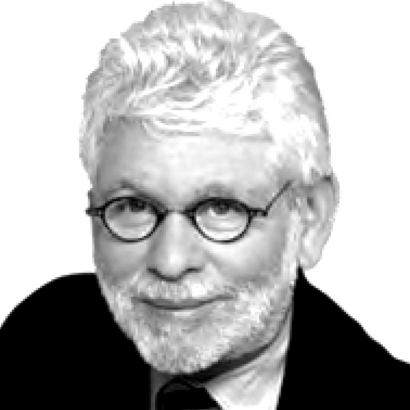In 1965, the year the first U.S. combat troops arrived in Vietnam, I was working at United Press International in New York and doing something called “filing the wire.” This entailed keeping foreign news off the main “A” wire and, west of the Mississippi, all United Nations news off the subsidiary “B” wire. U.P.I. was serving its customers, and they, small-town newspapers and weak-signal radio stations, had no interest in foreign news. This was the other America.
That insularity, that xenophobia, is really what Robert Kagan’s gripping book The Ghost at the Feast is all about. The title comes from an observation by Harold Nicolson, the British politician and diarist, that America was a mere specter at the meetings that discussed the international affairs of his day. The seat reserved for it was never taken.
The U.S. stayed out of World War I until the kaiser’s unrestricted submarine warfare became intolerable, and, after the armistice and exhilarating parades, it brought the boys home and told them to stay there. America departed, and a ghost slipped into its seat at the table.
Interwar America retired to its Barcalounger. It reduced its army to less than 200,000 and gave it broomsticks and wooden tanks for training purposes. An American elite kept an eye on Europe, but the rest of the country dozed. It wanted no part in European affairs, which were, tautologically speaking, Europe’s own affairs.
Hitler goaded and goaded, tested and tested, but America would not respond. He shredded the Versailles Treaty, marched into the Sudetenland, re-armed, and set out to solve his concocted Jewish problem by murdering every last one of them. From America came a dismissive yawn.
We could have done more. We should have done more. But Franklin D. Roosevelt was both constrained and cowed by an isolationism that was substantially fueled by vicious anti-Semitism. In 1939 an embarrassingly paltry bill to offer sanctuary to 20,000 Jewish children caused a rhetorical pogrom. The problem, as Laura Delano, a cousin of F.D.R.’s, explained, was not the children but what would happen to them: “Twenty thousand charming children would all too soon grow into 20,000 ugly adults.” The American Legion and other “patriotic” organizations piled on, and the bill was killed. In time some of the children probably were as well.

Kagan is a fine writer and an indefatigable researcher. His book is the product of a monumental amount of work—688 pages, of which 123 are notes and another 38 bibliography.
Two words, however, do not appear: “Iraq” and “Ukraine.” (He gets to Ukraine in a recent piece for Foreign Affairs.) Kagan, after all, was one of the intellectual fathers of the neoconservative movement that promoted the debacle of the Iraq War.
Franklin D. Roosevelt was both constrained and cowed by an isolationism that was substantially fueled by vicious anti-Semitism.
To the simple and naïve, that war was supposedly about weapons of mass destruction, of which Saddam Hussein was said to have oodles. But to neocons it was an opportunity for the U.S. to use its muscle in a grand cause that was removed from parochial national-security concerns.
Their argument was that Hussein was a trigger-happy megalomaniac—he had already gone to war against Iran, Kuwait, and his own people (the Kurds), and he had tried to kill former president George H. W. Bush by sending a team of assassins to Kuwait during Bush’s post-presidential visit there in 1993. They argued that he was a genuine threat to Middle Eastern peace and a mortal menace to Israel. Had he been allowed to develop nuclear weapons—never mind chemical or biological ones—Israel could have been eradicated in a single blow. Deposing Hussein was the right thing to do, and someone had to do it.
But it all went wrong. Iraq joined Afghanistan, Vietnam, and Korea in that most depressing of categories—the quagmire. They were wars not of necessity but of choice, fudgy categories open to interpretation, where victory was beyond reach and, after a while, undefinable.
This was the trap of neocon foreign policy, and it is the policy trap that awaits us in Ukraine. We will be reminded that Ukraine was never considered essential to Western security and, on the contrary, that it had long been a constituent part of Russia. Tchaikovsky felt so tenderly toward it that he called his Second Symphony the “Little Russian.”
Putin is no Hitler. But just as despots around the world watched with awe and envy Hitler’s rise and success, so do our century’s führer wannabes wonder about what they can get away with. Beijing is watching. Pyongyang is watching. And, tremulously and from bunkers, Kyiv is watching, also.
As of yet, there have only been sotto voce complaints in the Republican Party about aiding Ukraine. More are sure to come as America tires of a war that’s remote both in geography and urgency and drawing down our armories.
But a malevolent xenophobia lurks in the DNA of the G.O.P. It is the very same force that frustrated Woodrow Wilson and F.D.R. and instructed me not to burden the heartland with foreign news. It will emerge when someone in Congress or on Fox News utters the cry “What’s in it for us?” The answer, in riveting detail, is in Kagan’s book. I recommend it.

Richard Cohen is a former op-ed columnist for The Washington Post


